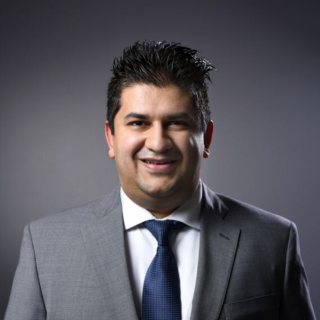The American Academy of Orthopaedic Surgeons 2018 meeting, held March 6–10 in New Orleans, LA, has just concluded and proved to be an outstanding learning experience. As a musculoskeletal (MSK) radiologist who has attended numerous national and international radiology meetings, it was quite interesting to see the parallels and a few differences I picked up on.
Being that I am not a trained orthopaedic surgeon, the meeting required careful selection of which educational experiences might be (1) more beneficial to me as a practicing MSK radiologist and those that might be (2) well outside my immediate comfort zone but within my realm of grasping the main points. I knew full well that some sessions would be way beyond my scope of understanding and thus not a great use of my time. However, I believe it is healthy to stretch one’s boundaries every once in a while to continue to grow.
One of the highest yield sessions I was able to attend was the “Debating the Top 5 Controversies in Hip Preservation” session held on Wednesday. In this session, paired experts were given 10 minutes each to debate one side of a controversial issue in orthopaedics as it exists today, and to make a case that certain clinical scenarios in hip preservation ought to be handled a certain way.
The 5 major controversies, as I learned are:
- Management of the mildly dysplastic hip — arthroscopy vs. periacetabular osteotomy (PAO);
- Soft tissue instability of the hip — understanding whether bony deficiency is necessary;
- Management of partial thickness tears of the gluteus medius tendon — surgery vs. platelet-rich plasma (PRP) injection;
- Management of young patients with mild to moderate hip osteoarthritis — arthroscopy vs. open surgery; and
- Slipped capital femoral epiphysis — whether reduction the key to better long-term results or if it increases risks.
The presentations made by veritable experts in the field were not only compelling in their own right, but at some points challenging to understand given my rudimentary understanding of what is involved in each of the discussed orthopaedic surgeries. There is a certain depth of knowledge that one cannot obtain without completing a residency and/or fellowship. That is, without having these pro-and-con discussions with patients and their families, without having such patients on your own clinic list, without seeing the complications of when such surgeries yield poor outcomes and how those are handled, and without seeing the day-to-day management of perioperative issues. I appreciate these nuances, but I do believe it makes me, and would make anybody else, a better radiologist to know where their referring providers are coming from in their thought processes.
For me, to be able to “think like an orthopaedic surgeon,” though still a stretch and something I will try to hone over my career, gives me a certain edge in my interpretation of an exam. I would argue that such an angle will be critical for radiologists to utilize as we aim to become more central and more visible parts of the clinical care team, and as medicine as a whole shifts from volume-based to value-based care. This will become ever more important as increasing numbers of cross-specialty care centers open surrounding a single healthcare area, e.g. women’s health centers and comprehensive musculoskeletal care centers which house all specialties related to musculoskeletal care under one roof (such as orthopaedic surgery, rheumatology, physical medicine and rehabilitation, neurology, etc).
The real value in my attending this meeting and my plans to attend other orthopaedic meetings is threefold: (1) the didactic portion of the meeting, wherein I sat in many sessions and gleaned bits and pieces of what matters most in the care and recovery of orthopaedic patients and what matters most to orthopaedic surgeons in their decision-making processes, (2) the overall exposure to what issues are at the forefront of orthopaedic care at the current time, including what new tools and technologies are now on the market, which open the doors for research collaborations and the like, and (3) perhaps most importantly the relationships that begin to form from meeting and discussing such topics with orthopaedic surgeons themselves. There is no substitute for face time in medicine, and there is immense value in realizing you both have identical goals for the patient’s care and recovery but simply come at it from very different perspectives and with different toolkits.
Dr. Kalia is an assistant professor of radiology at the University of Michigan Health System, Department of Radiology, Division of Musculoskeletal Radiology. He can be found on Twitter @VivekKaliaMD.







